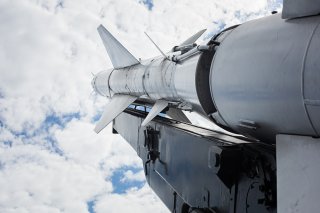Recurring Patterns in North Korean Nuclear Crises
Pyongyang isn’t likely to repeat engagement regarding its nuclear weapons program.
Will North Korea give up its nuclear weapons? Probably not in the near future. However, it does not mean North Korea will never return to the negotiation table. Despite several denuclearization pledges by North Korean leaders and U.S. diplomatic efforts to guarantee the regime’s security, North Korea is unlikely to move to a complete denuclearization. North Korea has had several agreements with the United States, including the Agreed Framework in 1994, Six-Party Talks from 2003 to 2009, the “Leap-Day Deal” in 2012, and the Singapore Summit in 2018, but it has failed to implement those agreements.
One of the most challenging questions in U.S. diplomacy is persuading Pyongyang to implement the agreements. When we look at these agreements, we find that they have a similar pattern. A crisis catalyzed talks, which stalled for a considerable period but eventually reached a consensus. Nonetheless, when they reached the implementation stage, the agreements collapsed. The United States has been involved in diplomatic engagements with North Korea to de-escalate the crisis but primarily focused on intensifying sanctions and deterrence when North Korea conducted nuclear and missile provocations.
It is essential to understand this pattern when analyzing U.S. agreements with North Korea. In particular, the process of reaching an agreement includes two different phases: crisis and negotiation. What caused the crisis each time before the U.S. obtained a deal with North Korea? In what conditions and circumstances did the denuclearization dialogue proceed after the crisis? What factors led to an agreement on denuclearization with North Korea, and what conditions were agreed upon? The key issues here are the crisis in the process leading to the denuclearization negotiation and the failure of the implementation, finally leading to the agreement's collapse. So, it is necessary to assess the three-decade-long U.S. diplomacy toward the denuclearization of North Korea and its failed efforts through the crisis and negotiation phases.
This pattern may also emerge during the Biden administration. Even with Pyongyang’s hardline policy of “heads-on breakthrough,” this crisis may catalyze new talks with North Korea. Of course, it does not necessarily mean that there would be another agreement between the United States and North Korea. The Biden administration has not pursued any active North Korea policy to break out of this pattern. President Biden reiterated the goal of the complete denuclearization of the Korean Peninsula and described his North Korea policy as a “calibrated and practical approach.”
However, it looks more like Obama’s “strategic patience,” a wait-and-see approach where Washington would not move until North Korea changed its course of action first. Furthermore, due to the Russian invasion of Ukraine and the strategic rivalry with China, the Biden administration lacks the time and interest to focus on North Korea.
The problem is that North Korea is not likely to engage the United States either. Pyongyang has recently recognized the return of the Cold War order in international relations and seeks to take advantage of it on the Korean Peninsula. This is the reason for Pyongyang’s efforts to improve ties with China and Russia. A crisis may become a catalyst again, but it would be difficult to get out of the old pattern. So, the stalemate will continue.
Jihwan Hwang is a professor in the Department of International Relations at the University of Seoul.
Image: Shutterstock.

